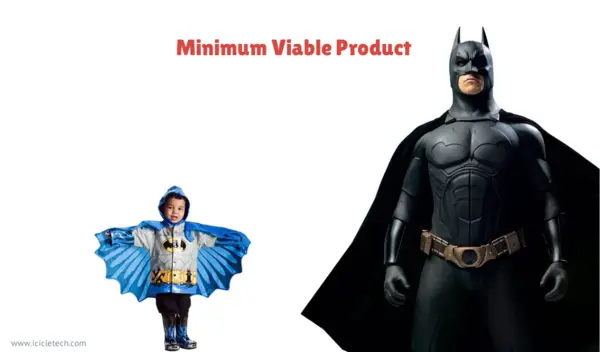This is truly what you are trying to do as an Entrepreneur or Startup. You have an idea, an idea you think can work, but no one has implemented it yet. At least not in the way you have imagined it. So how do you go about getting this idea into a reality?
One option can be a Minimum Viable Product or MVP, which will allow you to crystallize your idea into a product with minimum risk and resources.
A Minimum Viable Product/Service helps you to validate your idea by quickly prototyping and reaching out to the market and core customers. The entire focus of the MVP should be to get the best possible product to the market as soon as possible so that you can start receiving quality feedback from your customers.
Before getting into what and why of MVP, Startups need to understand different facets of MVP. An MVP process is not just a product development process, but also best practices Startups need to think about.
Thinking about MVP
Minimum Viable Product is Communication Channel
- Think of MVP as a communication channel rather than the product. Is your product able explain your early adopters an idea about the core of the product, and the direction of the product?
Minimum Viable Product is Organizational Culture
- Startups are defined by their speed, and success or failure depends on the speed at which Startups respond to market changes. Building Minimum Viable Product process means entire organizational culture is built with agility and feedback loops.
Minimum Viable Product is Business Strategy
- MVP is an effective business strategy. Startups need not stop using this strategy once the initial product is ready, you can continue using it for any product feature – You ideate, test, get feedback, build and release.
Minimum Viable Product is Resource Management
- Startups deal with constraints all the time. Constraints can be in terms of money, time, people, skill, market so on so forth. A culture of MVP helps Startups in managing these resources and still able to produce.
How to do an MVP
- Your Minimum Viable Product need not even a require a functioning product at the back. It can be simply a prototype, video or just a landing page which tells your customer what is that you are trying to solve. As I said, think of it as a communication channel.
- You need to have feedback channels built into the MVP. This can be as simple as measuring how many users clicked on the screen, to complex surveys to gauge the user preferences.
- Prepare for faster execution on the product promises you are making to your customers. If you do not have the capability, you need to build that soon enough. Disappointing your customers is the surest way to lose them.
- MVP is the starting point, not the end in itself. Unless you are able to refine, expand or scale your product, your customers are not going to stay with you for long. While MVP is a taste test, you still need to deliver the dish.
- A Minimum Viable Product does not mean that your product has to look bad or is error prone. It just means that MVP implements only a minor part of entire product functionality.
MVP Advantages
Maximize Success
- MVPs maximize Startup’s chances of success. Success for a Startup is product adoption, for adoption you need a product which users want. MVP will allow you to do that.
Prioritize Correctly
- MVP process teaches prioritizing. When you are trying to Change The World™, you need to prioritize on where to start. MVP process help product managers in trimming down the fat, and focusing on the core.
Focus on Learning
- Minimum Viable Product strategy focuses on learning. It forces Startups to keep learning from their customers, respond to change or negative feedback quickly. Any Startup which can do that can pivot on the product features and deliver customer delight.
Get Customer Evangelists
- MVP strategy focuses on Startups reaching out to customers as soon as possible. In fact, Startups may be able to attract few fierce adopters/customers who may have the best insight of the market, driving product features and product’s reputation.
Attract Talent
- You may have the best idea, but you will need a brilliant team to execute it. An MVP will allow you showcase this idea to attract talent from the Industry.
Attract Investors
Shortcomings
MVP is not a Silver Bullet
- MVPs may not be the right approach for every product. You can not build a medical imaging system or core banking application as an MVP. May be you can, but not in the same way it is supposed to be done.
Additional Processes, Culture that needs to change
- Startups need to build the feedback loops, this includes behavior, tools, and technology. Sometimes this can be as difficult as building up the product itself.
Misdirected Feedback
- Some of the product feedback can appear to be valid but may take the product into the wrong direction. Entrepreneurs need to have enough judgment to say no to this kind of feedback. This can be more difficult than it appears.
Lasting First Impressions
- The first impression of your product can disappoint some customers. Some of these impressions can persist for a long time making it difficult in marketing the product at later date, and some of these customers may never come back.
Forced Technology Choices
- Choice of technology can become an issue. Some technologies which are great for building MVPs may not scale well, some technologies which can scale are impossible to prototype. Choose wisely.
Imperfect MVP
You should realize though that your MVP is going to be an imperfect product. Your product MVP may have an imperfect body, but it should have the perfect product soul.
Your customers should be able to recognize what problem you are trying to solve, and the direction in which your product is traveling to solve that problem. If that clarity is not there in the MVP, it still needs work.
Ultimately, a Minimum Viable Product is a great strategy for your Startup and helps you to learn about your customers and product direction with minimum risk.
Tweet This
A Startup’s Guide to Minimum Viable Product https://t.co/bsBnoGcsM1
— Icicle (@icicletech) July 12, 2017







Leave a Reply